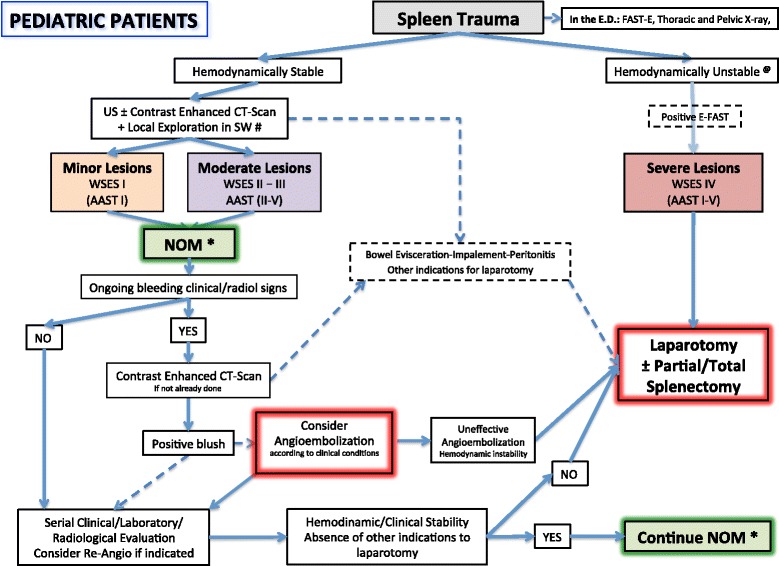Fig. 3.

Spleen Trauma Management Algorithm for Pediatrics Patients. (SW stab wound, GSW gunshot wound; *NOM should only be attempted in centers capable of a precise diagnosis of the severity of spleen injuries and capable of intensive management (close clinical observation and hemodynamic monitoring in a high dependency/intensive care environment, including serial clinical examination and laboratory assay, with immediate access to diagnostics, interventional radiology, and surgery and immediately available access to blood and blood products or alternatively in presence of a rapid centralization system in those patients amenable to be transferred; @ Hemodynamic stability is considered systolic blood pressure of 90 mmHg plus twice the child’s age in years (the lower limit is inferior to 70 mmHg plus twice the child’s age in years, or inferior to 50 mmHg in some studies). Stabilized or acceptable hemodynamic status is considered in children with a positive response to fluids resuscitation: 3 boluses of 20 mL/kg of crystalloid replacement should be administered before blood replacement; positive response can be indicated by the heart rate reduction, the sensorium clearing, the return of peripheral pulses and normal skin color, an increase in blood pressure and urinary output, and an increase in warmth of extremity. Clinical judgment is fundamental in evaluating children. # Wound exploration near the inferior costal margin should be avoided if not strictly necessary because of the high risk to damage the intercostal vessels)
